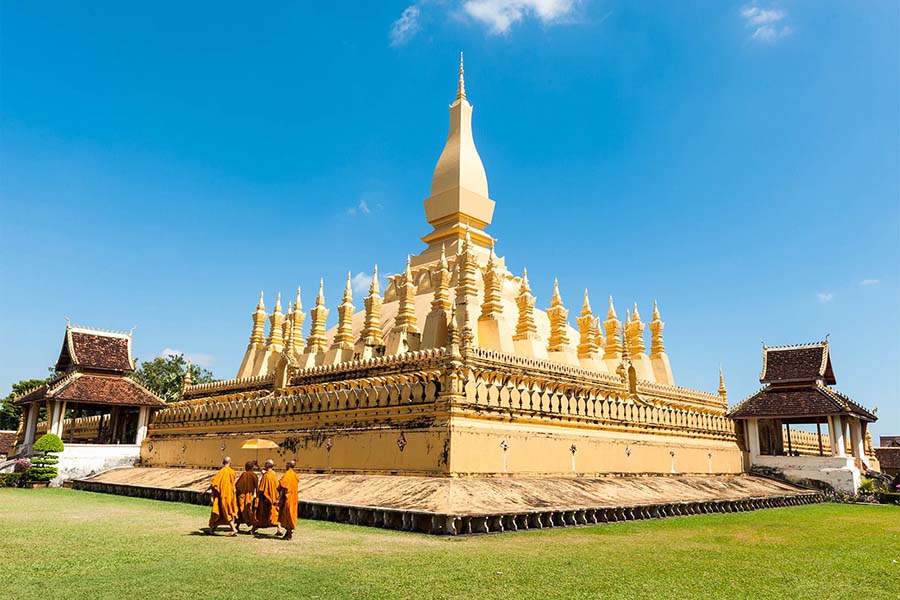A Brief History of Laos
Welcome back to the jungle!!!
*cue Guns N’ Roses* Now that we have that out of the way, today’s discussion is
going to be about history, in particular the history of the Lao. Now, I know
what y’all are thinking. “But we don’t want a boring history lesson! We want to
hear about the exciting parts of Lao culture, like life, love, food, and
celebrations!” Before you get bored and go listen to more Guns N’ Roses
bangers, let’s stop and think about where Lao perceptions of life, love, food,
and the reasons for celebrations came from. That’s right, their history! I
won’t bore you with dates and endless lists of kings; we’re only going over Lao
history in the briefest way possible. However, for those of you who are
interested in a closer look, I’ve included a timeline of major events as well
as a short YouTube documentary. I won’t be discussing everything on the
timeline, as that would require a lot more space than we have today. Instead,
the purpose of this is to give you a better understanding of how Laos’s past
impacts its present. With that, let’s get into the history of Laos!
The Pha That Luang in Vientiane
Like many ancient civilizations, not much is known about Laos way back in the very beginning. However, they appear to have been a hunter-gatherer society. Much of their early influences came from Indian traders, whose biggest contribution was bringing Buddhism to the Lao. Buddhism is still prevalent today, as discussed in a previous post. One of the most notable remnants of ancient Lao history is the Plain of Jars. Similar to the heads of Easter Island or Stonehenge, no one really knows what the Plain of Jars is. As the name implies, it is a region of Laos that consists of hundreds of stone jars, in various shapes and sizes. Artifacts have been found inside the jars, leading some to speculate that it may have been a burial site.
 |
| Timeline of major historical events in Laos |
Lao history really began in the 14th century when Chao Fa Ngum founded the kingdom of Lan Xang. For a couple hundred years, things went pretty well. During the reign of Souriyavongsa (1637-1694), Lan Xang experienced its Golden Age. Unfortunately, he didn’t leave an heir. This caused the nobility to fight amongst themselves, and Lan Xang split into three kingdoms. The divided kingdom was much weaker and came under the control of the Siamese in 1779. Surprisingly, the Lao don’t hate the Siamese. In fact, a good portion of the population in northern Thailand are ethnically Lao, due to how borders were drawn after modern-day Laos became a French colony. Historically, the Siamese and Lao have had mixed relations. At times they were friendly and helped each other, at others, they were at odds. Currently, Laos and Thailand are on good terms with each other (Local Histories).
A second influential time
in Lao history is when Siam gave all land east of the Mekong River to France. This
is where the modern-day border remains. In the capital city of Vientiane, some buildings
and roads still have French names. French is still commonly spoken, although it
is no longer included in the school curriculum as of 2019. Laos tried to gain
independence for a brief time from 1944 to 1945, which was successful for a
short time. In 1953, the French granted Laos its independence. It was a
constitutional monarchy until it came under communist control.
In recent history, the Vietnam War (1955-1975) has had the largest impact on Laos. This small nation is the most heavily bombed country in world history, with over 6 billion pounds of explosives having been dropped by America and its allies. Some of this bombing was accidental, as Laos and Vietnam are neighboring countries. However, despite American media claiming the war was not being fought in Laos, America was indeed fighting there. The Viet Cong and other communist forces had several strongholds and would run supplies through Laos. Because of the soft jungle ground, many of the bombs didn’t explode and are still there today. Many Lao farm, hunt, and otherwise rely on the land for their livelihood. While there are groups whose job is to properly dispose of UXO (unexploded ordinances), thousands of Lao lose limbs, eyesight, hearing, or their lives every year from encountering UXO. Immediately following the Vietnam War, Laos became a communist country. It remains communist today, although it has implemented some free-market reforms to stimulate the economy.
Those are the major
turning points in Lao history! However, since we only covered it very quickly, the video above goes into more depth should you be interested. It discusses the beginnings of Lan Xang, the Golden Age, how the
split happened, and other smaller conflicts that we didn’t talk about here. It
also showcases some of Laos’s amazing scenery, so you should definitely check
it out! In the meantime, I shall be enjoying some Guns N’ Roses and learning
more about Lao culture to share with all of you!
Comments
Post a Comment